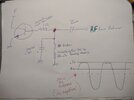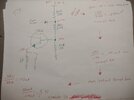Thanks Brandon, you got darn good eyesight. I checked in that area time and time again, never even noticed that. I'll swap that out and get back with you.
Would this also keep the base and emitter of the driver at 0v in both receive and transmit?
Would this also keep the base and emitter of the driver at 0v in both receive and transmit?


